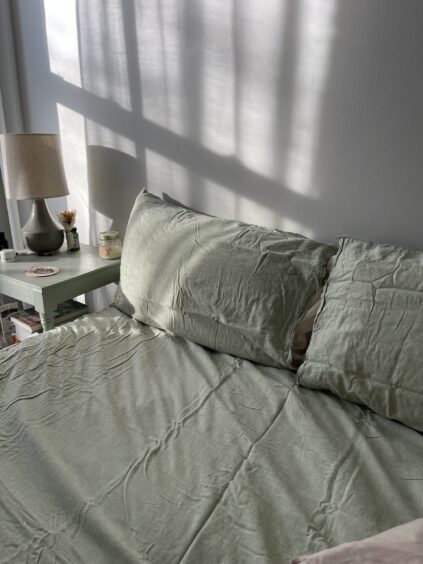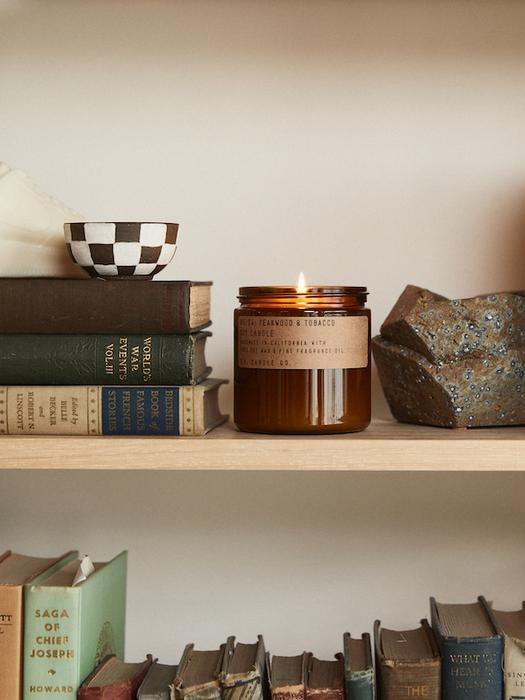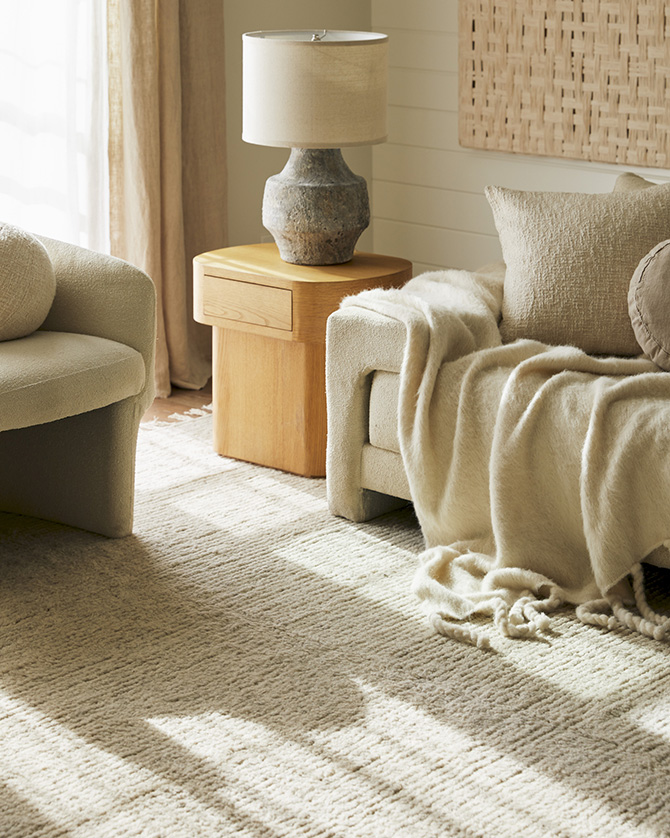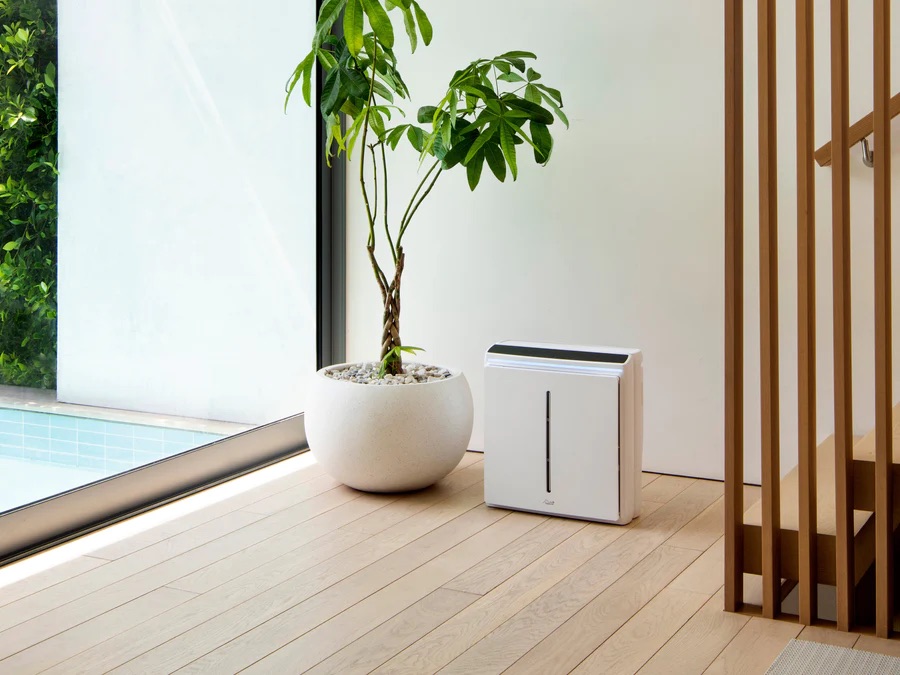
9 Best Air Purifiers For Indoors (2024)
The Good Trade editors endorse products we’ve personally researched, tested, and genuinely love. Learn more about our methodology and business model here.
We’ve researched and tested dozens of home air purifiers — these are our top picks for their efficiency and effectiveness, with affordable options included.
According to the EPA, the concentration of pollutants like pollen and mold are often two to five times higher indoors than they are outside. And given that we spend most of our time inside, we want to ensure that our space is as clean as possible, especially if we suffer from allergies, asthma, or other respiratory illnesses. In this case, we recommend looking into a home air purifier.
How do air purifiers work?
The simplest way to think of an air purifier is like a colander or sifter: When you’re draining pasta, for example, the slits allow the water to come through while still holding on to the food. The same applies to an air purifier. Using an internal fan, the machine sends air through a filter, trapping pollutants, irritants, and even odors. Clean air is then released. This process continues throughout the day to ensure you’re circulating the freshest air. Some air purifiers also use electronic technology that ionizes particles and traps them. However, this can lead to ozone emissions, so it’s important to do research to see what best fits your needs.
Do I need an air purifier in my home?
If you live in a heavily polluted area or suffer from allergies, asthma, or respiratory issues, an air purifier could be an essential addition to your home. (Also if you have pets or are near smokers, you may understand firsthand how badly allergies can act up in enclosed spaces.) Since an air purifier helps filter out dust, pollen, pet dander, and even some airborne viruses and bacteria, it will help make your indoor air cleaner and healthier to breathe. So alongside regular cleaning and strong ventilation, air purifiers can be a real game-changer to help remove those potent allergens and irritants.
Note: While air purifiers can soothe allergies or asthma-related issues, it may not be a cure-all for your specific health needs. Please consider reaching out to your primary care doctor for long term relief.
What to shop for
To begin, think about the size of your space. Are you looking for a portable home air purifier to use between your bedroom and office, or one standalone machine for an entire apartment? Some options work for 20 square feet spaces while others work across 1,000 square feet. Some homes even need multiple air purifiers, so consider your overall quantity first.
Once you have a sense of your needs, decide which kind of air filter or system you want. The most effective filters are called High Efficiency Particulate Air (HEPA) filters, which have multiple layers of screening to capture even the tiniest particles. Some filters are made of paper, fiber (like fiberglass), or mesh, and almost all of them require regular maintenance every few months. If you’re looking for filters that remove odors and smoke as well, look into an activated carbon filter to help neutralize those pollutants. Ideally, set aside a budget for regular refills for whichever filter you choose as well as how much electricity the purifier will use—especially if it’s always running.
When it comes to quality, look at the Clean Air Delivery Rating (CADR), or the cleaning speed. While industry standards vary on the optimal range, we recommend generally looking for CADRs of 100+, with a score above 350 being extremely effective. (Generally speaking, a purifier should be able to remove at least 99.97 percent of particulates measuring 0.3 microns or more, which is to say, it should capture almost anything the eye can see.)
“Ideally, set aside a budget for regular refills for whichever filter you choose as well as how much electricity the purifier will use.”
Lastly, consider any certifications, sustainability, and safety ratings like the Association of Home Appliance Manufacturers (AHAM) verification. If an air purifier is reputable, it will likely have this verification or, at the very least, strong CADR ratings.
Now that you have the 101, it’s time to check out some of the best and most sustainable home air purifiers on the market. These nine brands (and an all-natural bonus 😉 ) will have you breathing easier in no time.
Our criteria
- PROVEN EFFICIENCY | These at-home air purifiers are proven to trap and filter out all kinds of irritants, helping to remove at least 99.97% of contaminants.
- RANGE OF CONTAMINANTS FILTERED | We all have different reasons for needing air purifiers, and these selections filter it all out including pollen, pet dander, mold, smoke, dust mites, pesticides, ozone from air cleaners, pollution, viruses, VOCs (volatile organic compounds) from chemicals, and even formaldehyde.
- AFFORDABILITY | We’ve included some affordable air purifier options on our list that are just as effective in cleansing the air!
Though an air purifier is essential for maintaining the health of the air quality in our home, other factors like dry air can wreak havoc on our bodies, especially our skin. If this is the case, it might be worth adding a nontoxic humidifier to your space. Be sure to also stay hydrated with a plastic-free water filter!
Best Overall | Best For Allergies | Most Affordable
1. Blueair
Filter Information | Washable pre-filter, HEPASilent technology, ENERGY STAR rated, app connection, removes pollen, cooking odors, dust, pet dander & odors, mold, bacteria & viruses, smoke & chemicals
Purifies Up To | 526 square feet
Price | $170
Get (or give!) a better night’s sleep with Blueair’s Blue Pure 411 air purifier. Equipped with HEPASilent™ technology, this baby quickly cleans over 200 square feet in under 13 minutes. This smart purifier goes on standby when you leave the house and turns back on when you’re getting close. With a CADR of 141 cfm and voice activation, it’s easy for this filter to catch everything from foul odors to pollen and dander. Even if you use it around the clock, the filter only needs to be replaced twice a year. Hit the one-touch auto mode, and almost immediately, you’ll notice a difference. This model is ideal for small spaces, and it’s quiet, never louder than 46 decibels.
Blueair Review | “This little purifier is fantastic. It’s easily the most aesthetically pleasing unit I have had the pleasure of owning. It is at home in any modern or contemporary decor choice. Its simple yet ingenious design utilizes a standard pre filter/filter setup. However the cylinder shape provides so much more filtering surface area than other rectangle shaped models. The motor itself is clearly powerful enough for a medium sized space, but it is whisper quiet. I noticed almost immediately it removed the odor of dog from the room my two big pups spend the most time in. That in and of itself was the true test for me. I would not hesitate to put one of these on each floor of the home.” – @CaptainW (See all reviews)
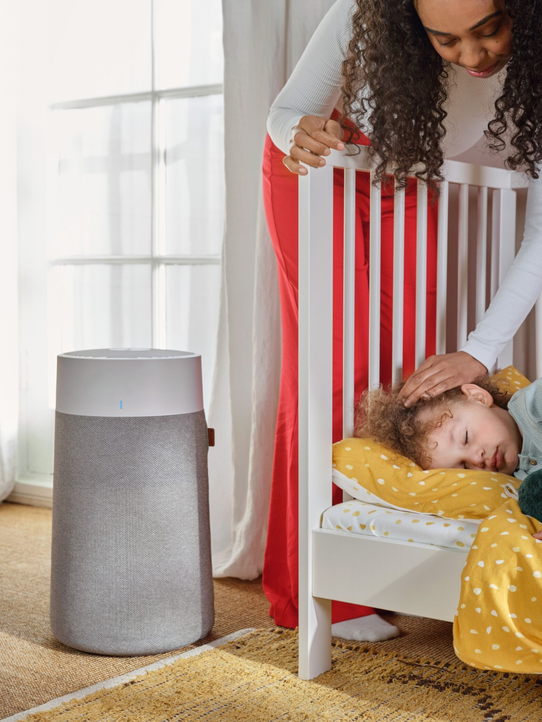
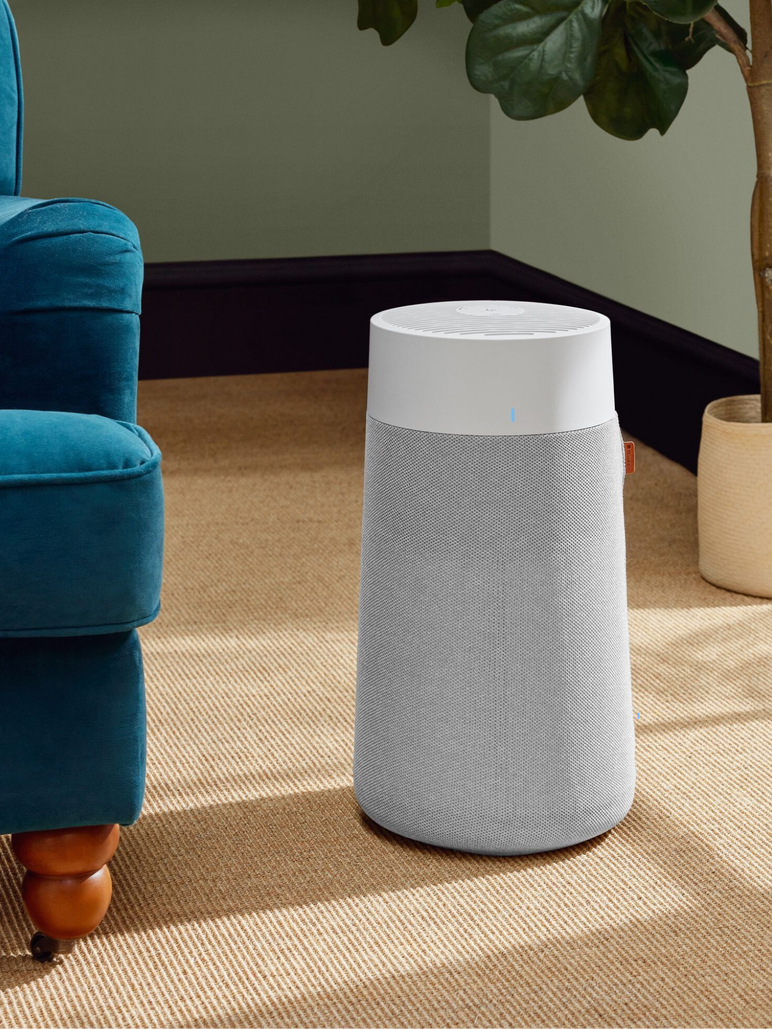
2. Brondell
Filter Information | Five air filtration stages, proven to eliminate 99.9% of SARS-CoV-2, H1N1 & H3N2 influenza viruses, removes airborne pollutants & allergens, smoke, pet dander, pollen, dust, airborne mold, formaldehyde, VOCs, odors & harmful gases
Purifies Up To | 1655 square feet
Price | $800
The Brondell Pro Sanitizing Air Purifier is the industry leader in air purifiers, with multiple certifications and third party-testing to verify its performance features. Not only does it remove 99.97% of the dust, dander, pollen, smoke and bacteria from the air, but it’s also proven to eliminate 99.9% of SARS-CoV-2 within 15 minutes with just the push of a button. Testing by MRIGlobal and SGS lab testing also showed that the Pro eliminates 99.9% of H1N1 and H3N2 influenza viruses within one hour. With a sleek design, a filter lifespan of 8-12 months, and the ability to purify air up to 1655 square feet, this filter is the dream.
Brondell Review | “I use air purifiers in my own home and understand the benefits of having clean filtered air. Having the Brondell Pro in my restaurant provides not only an added layer of protection from COVID-19, but it also offers us much more. With the Brondell Pro, we can scrub the air of other particulates, like flour, which is an added benefit for our customers with severe gluten allergies or celiac disease. It helps us create an even safer environment for both them and us. There are a number of benefits to having an air purifier, and we’re excited to be able to tell our customers that we have one that can eliminate COVID-19 too.” – Gialina (See all reviews)
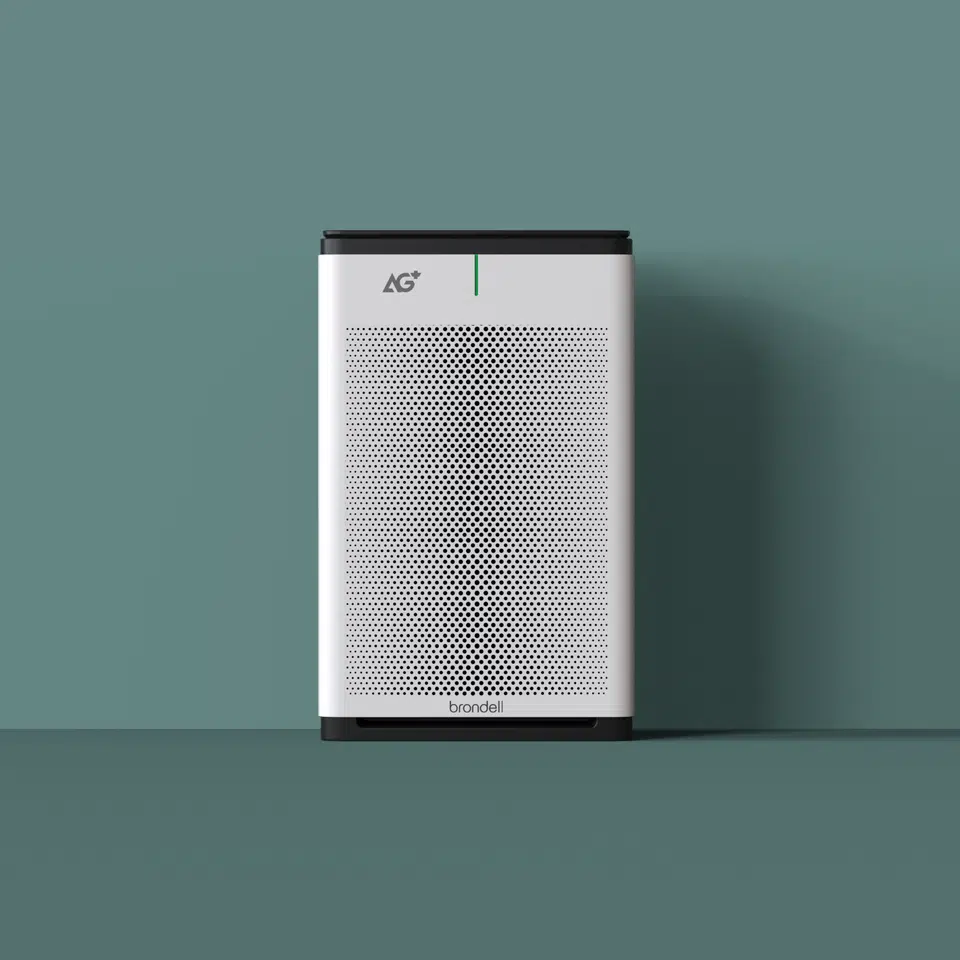
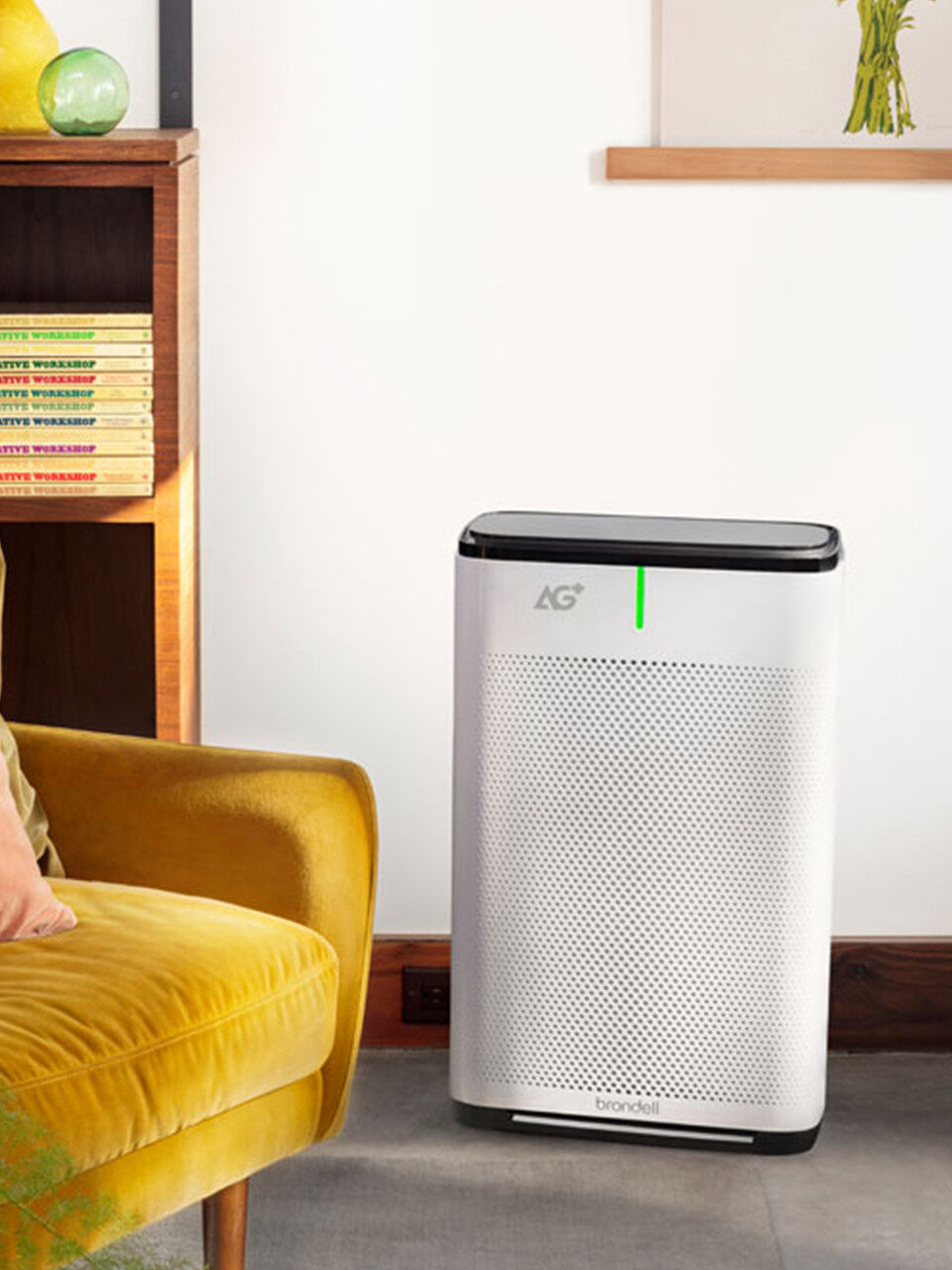
3. Molekule
Filter Information | PECO technology, true HEPA 99.97% particle-capture efficiency rate, app connection, removes pollen, dust mites, pet dander, viruses, VOCs, gases from smoke & mold
Purifies Up To | 1000 square feet
Price | $1,004
While most air purifiers seek to attract ultra-fine particles to a filter, Molekule aims to destroy pollutants all together with its PECO purification technology. Family-founded and operated, Dr. Yogi Goswami and his two children started the company when co-founder Dilip suffered from asthma and allergies. Today, the company shares its innovative tech with businesses, medical institutions, and consumers looking for fresher air. With four different options for various sizes, we love the Air Pro, which can work in spaces of up to 1000 square feet.
Molekule Review | “Air Pro is an absolutely great filter. One can clearly feel the difference on this machine running for a day or two. Air feels cleaner and refreshing. Although a bit pricey, I definitely would recommend this unit.” – Princido T. (See all reviews)
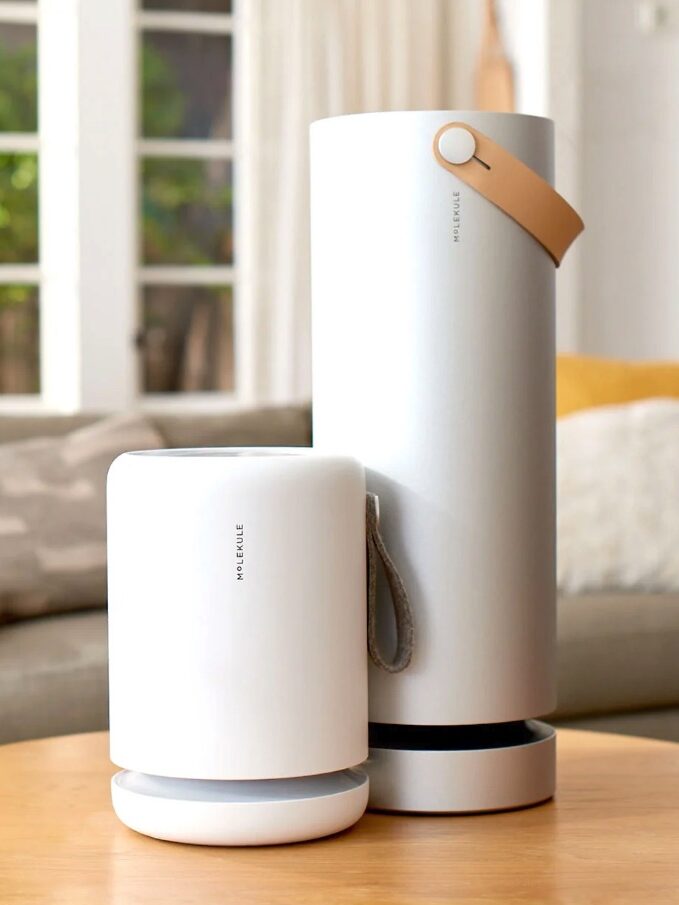
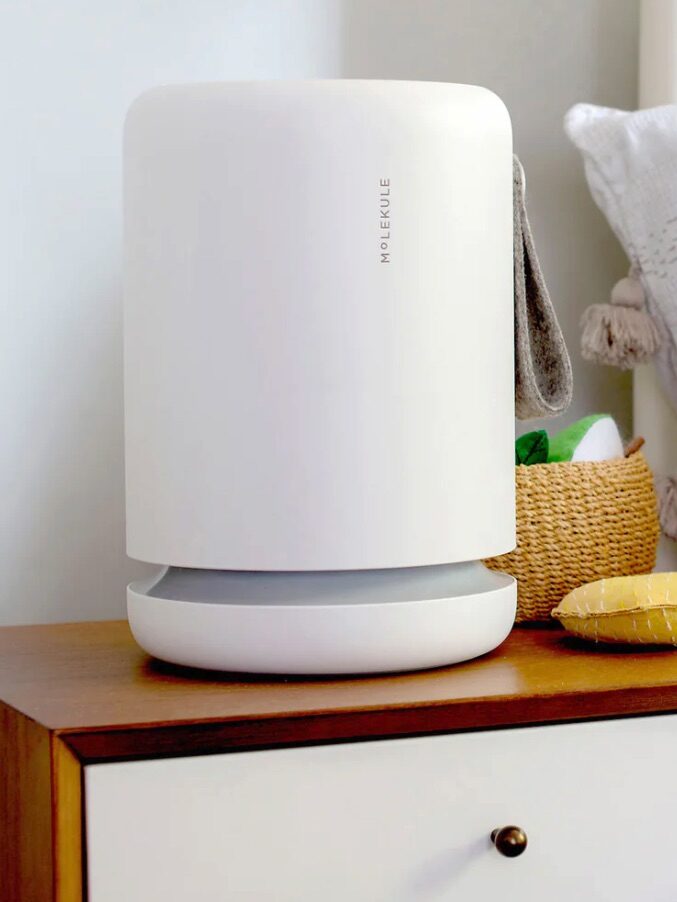
4. Rabbit Air
Filter Information | Six stage purification, BioGS HEPA filter, app connection, ultra quiet, custom filter for your environment, removes bacteria, cooking odors, pet hair & odor, dander, dust, exhaust fumes, mold & fungi, viruses, greenhouse gases, tobacco smoke & VOCs
Purifies Up To | 815 square feet
Price | $620
If you’re more concerned about certain pollutants over others (i.e., animal dander), you’ll like Rabbit Air’s customizable MinusA2 air purifier. In addition to catching common pollutants like dust mites, mold, and bacteria, the purifier’s specific filters trap and remove irritants like foul odors or toxins. Several models are also WiFi-enabled and work with Alexa or Bluetooth connections, so you can keep things running even when you’re not in the room. With CADR levels at 200 cfm, a Rabbit Air purifier is sure to be a worthwhile investment.
Rabbit Air Review | “Wow! We purchased 2 purifiers for our home due to the increasing difficulty controlling my husband’s asthma and allergies. It was easy to set up, monitors continuously and most importantly there has been a noticeable difference in the quality of air in our home. We’ve had them for 3 weeks. My husband hasn’t had to use his rescue inhaler or take allergy meds beyond his regular meds for the last 2 weeks.” – Daisey D. (See all reviews)

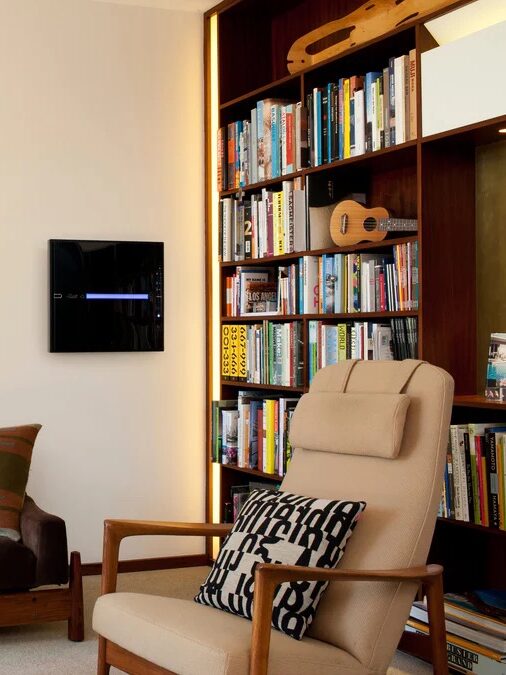
5. Briiv
Filter Information | Biodegradable filter with 90% less plastic, low energy, app connection, usb plug-in, as powerful as 3,043 houseplants, removes pollen allergens, pet dander, dirt, dust, smoke, VOCs & harmful particles
Purifies Up To | 385 square feet
Price | $375
For an extra sustainable option, certified B Corp Briiv is a Kickstarter-backed air filter made entirely from natural and biodegradable materials like coconut, moss, and wool that trap specific irritants. Once the plastic-free filters are used up, they naturally degrade over time. Plus, it works well with technology, too, running on a 5V USB and compatible with apps like Alexa and Google Assistant. No watering, waste, or real effort is needed. Plus, no eye sores here: the filter not only looks like a houseplant, but has the same air-cleaning power as over 3,000 medium-size houseplants!
Briiv Review | “Easy to get going. Love the one hour cycle. Guests notice the fresher air, and our bulldog doesn’t sneeze in the middle of the night due to dust, etc. We all get a more restful night of sleep. Planning on buying more.” – Alyssa A. (See all reviews)
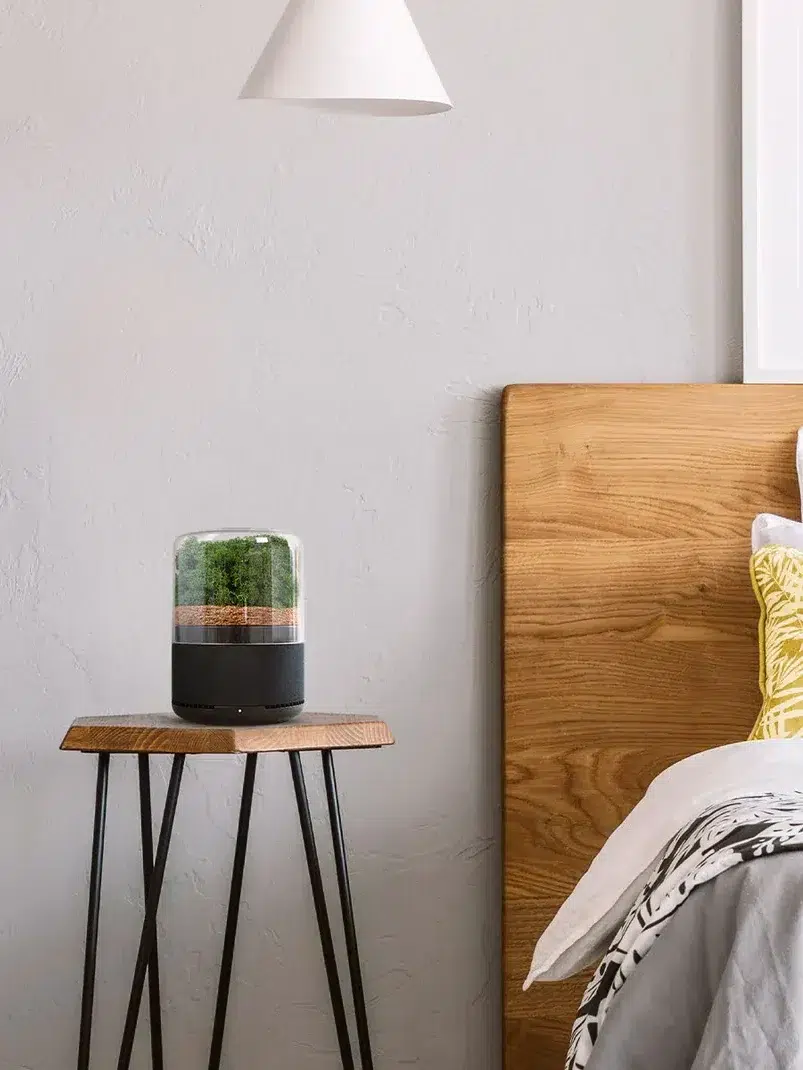
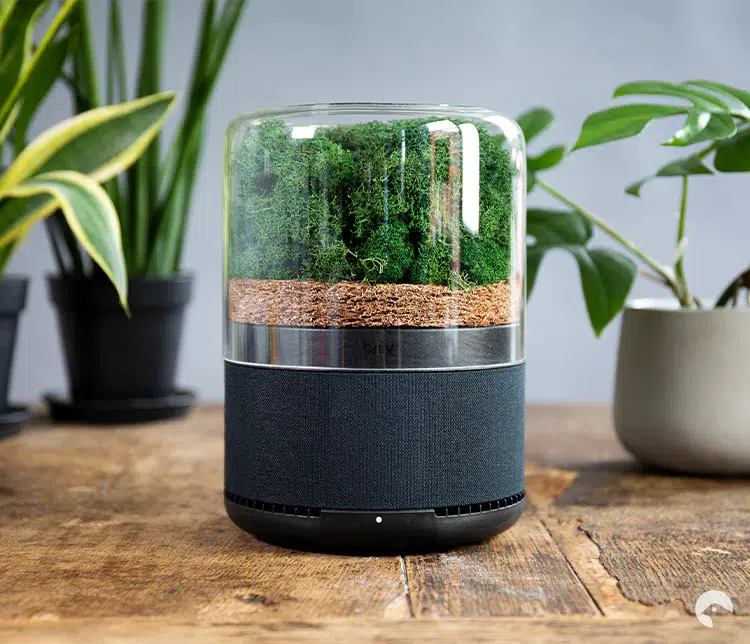
6. dupray
Filter Information | HEPA-13 medical grade air filter made with 64% less plastic, washable pre filter, removable integrated planter, night mode, smart air pollution detector, removes dust, smoke, bacteria, viruses, allergens, VOCs, pollen, pet dander, mold, odors & airborne particles from wildfires
Purifies Up To | 1,517 square feet
Price | $300
dupray’s Bloom Air Purifier doesn’t just clean your air, it does it in style! This sleek, HEPA-13 air purifier not only blends seamlessly with your decor but also lets you flex your green thumb by doubling as a home for your favorite plant. Its powerful filtration technology quickly reduces 80% of smoke, cooking fumes and cigarette smoke in only 8 minutes. It’s pre-filters — also catches all the big stuff like pet dander and pollen, and they’re washable, so maintenance is a breeze. Whether you’re a plant parent or just want to breathe easy, the Bloom Air Purifier gets the job done right.
dupray Review | “The integrated planter on the Bloom Air Purifier is a unique feature that adds a touch of elegance to my home. While it doesn’t replace a dedicated plant care routine, it’s a nice addition to the air purification process.” – Olivia M. (See all reviews)
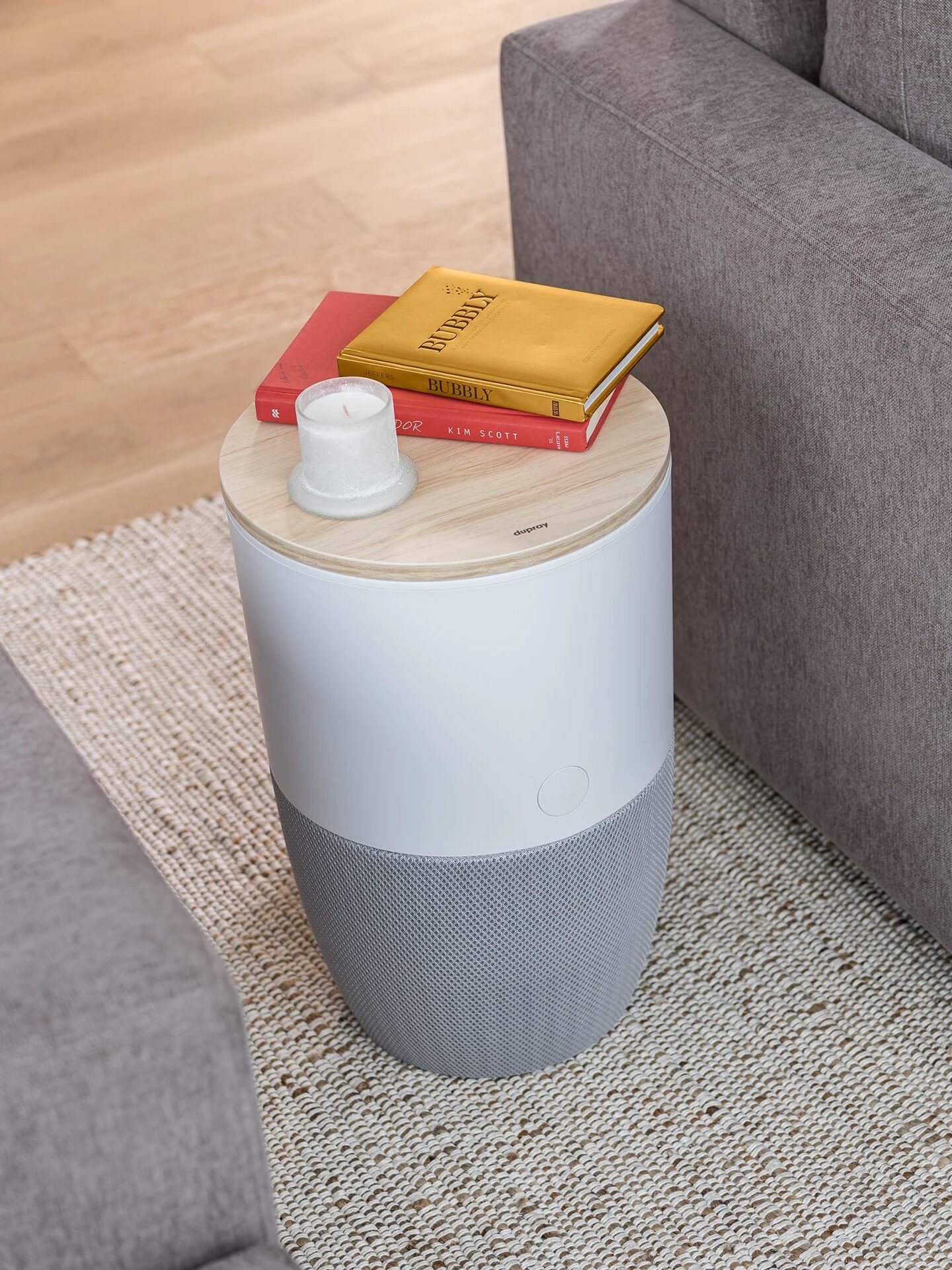
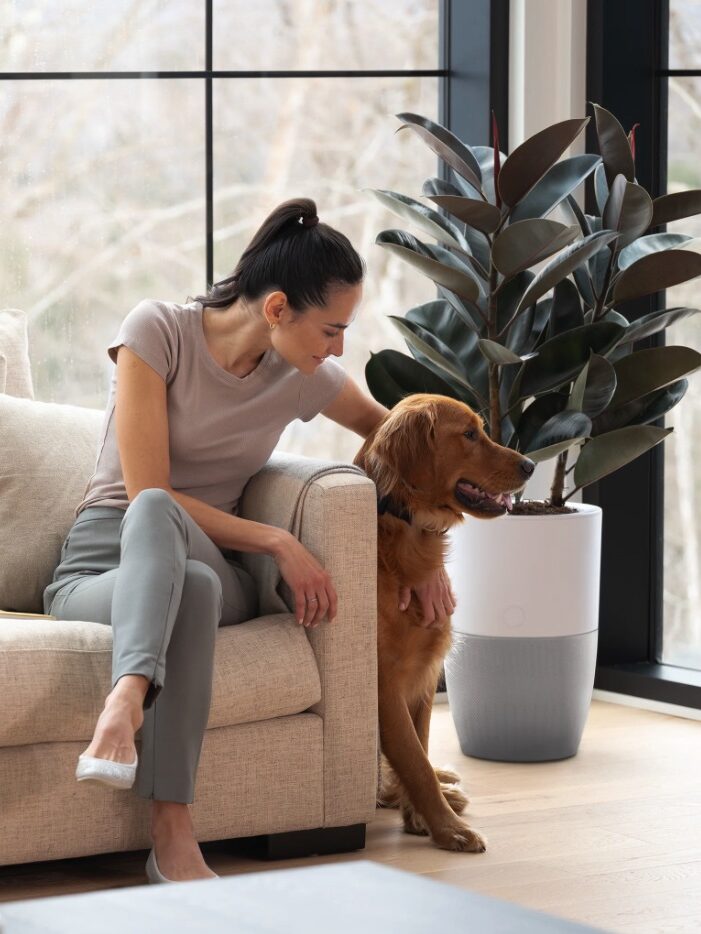
7. Dyson
Filter Information | Formaldehyde sensor, Air Multiplier™ technology, HEPA filter, app connection, voice control, oscillating, night mode, ENERGY STAR certified, removed formaldehyde, wildfire smoke, pollutants & allergens
Purifies Up To | Entire room
Price | $750
Dyson’s Purifier Cool Formaldehyde TP09 is a high-tech fan that does way more than just cool your room. Whether it’s formaldehyde or other chemicals and irritants, this fan traps the peskiest pollutants, keeping your air clean. With its integrated sensors and fancy algorithm, it’s always on the lookout, displaying live updates on its screen. Plus, it’s got a HEPA filter that captures almost all the tiny particles floating around, and it even takes care of odors and gases. If you’re serious about breathing clean air, Dyson’s got your back – and your lungs!
Dyson Review | “I have been having asthma attacks during the night and advice was to get a purifier. I had to think if this machine was worth it but I am happy since you could really compare the air outside and a home with a purifier in it. Worth every penny!” – Bles (See all reviews)
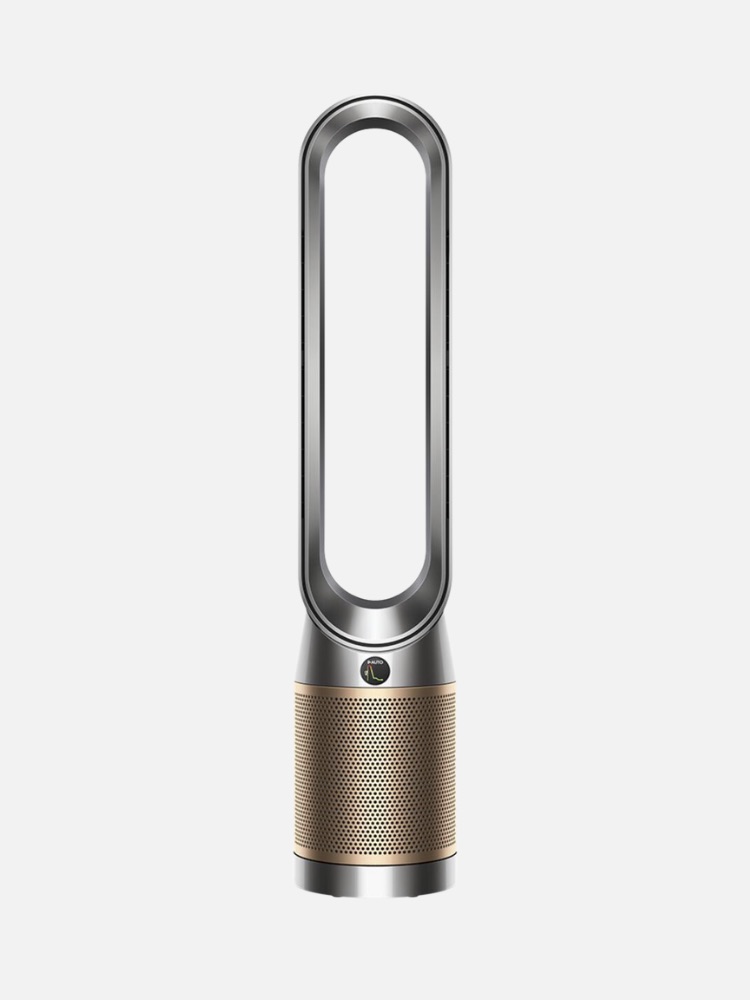
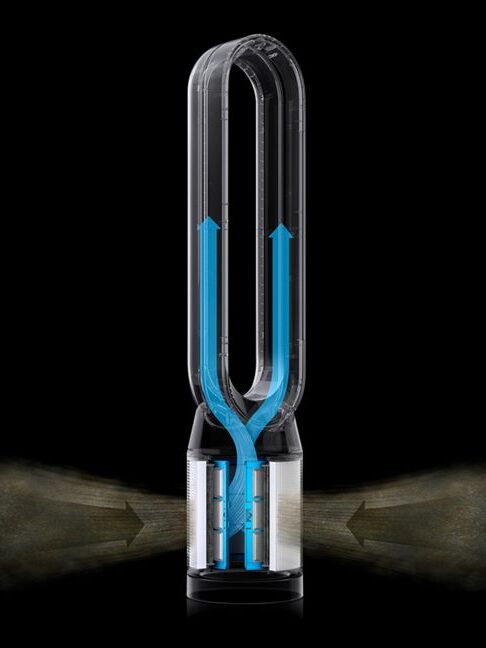
8. Neoplants
Filter Information | 30x better than regular plants at capturing VOCs, targets benzene, toluene & xylene
Purifies Up To | 160 square feet
Price | Starting at $99
There’s nothing that naturally cleanses the air better than plants, and Neoplants does it best! The revolutionary Neo Px plant system is a one-of-a-kind air purification setup that combines natural elements with bioengineering. While the plant naturally cleans the air, your job is simply to add “Power Drops” to the soil monthly — these special drops were developed to break down pollutants and turn them into nutrients for the plant, resulting in clean, pure air! The system also includes a Shell to improve airflow and boost performance. Together, this plant and bacteria work as a natural, eco-friendly air cleaning solution that’s easy to use and highly effective!
Customer Review | “So far, this has been the easiest plant I’ve ever had. The leaves are broad and pretty, vines are long and healthy, and watering is effortless. My family and I moved to a new home, so the paint scents were strong. I’m happy to say that the Neo PX gives me peace of mind that I’m not inhaling nearly as many toxic chemicals as I could have been.” – Kacy S. (Read all reviews.)
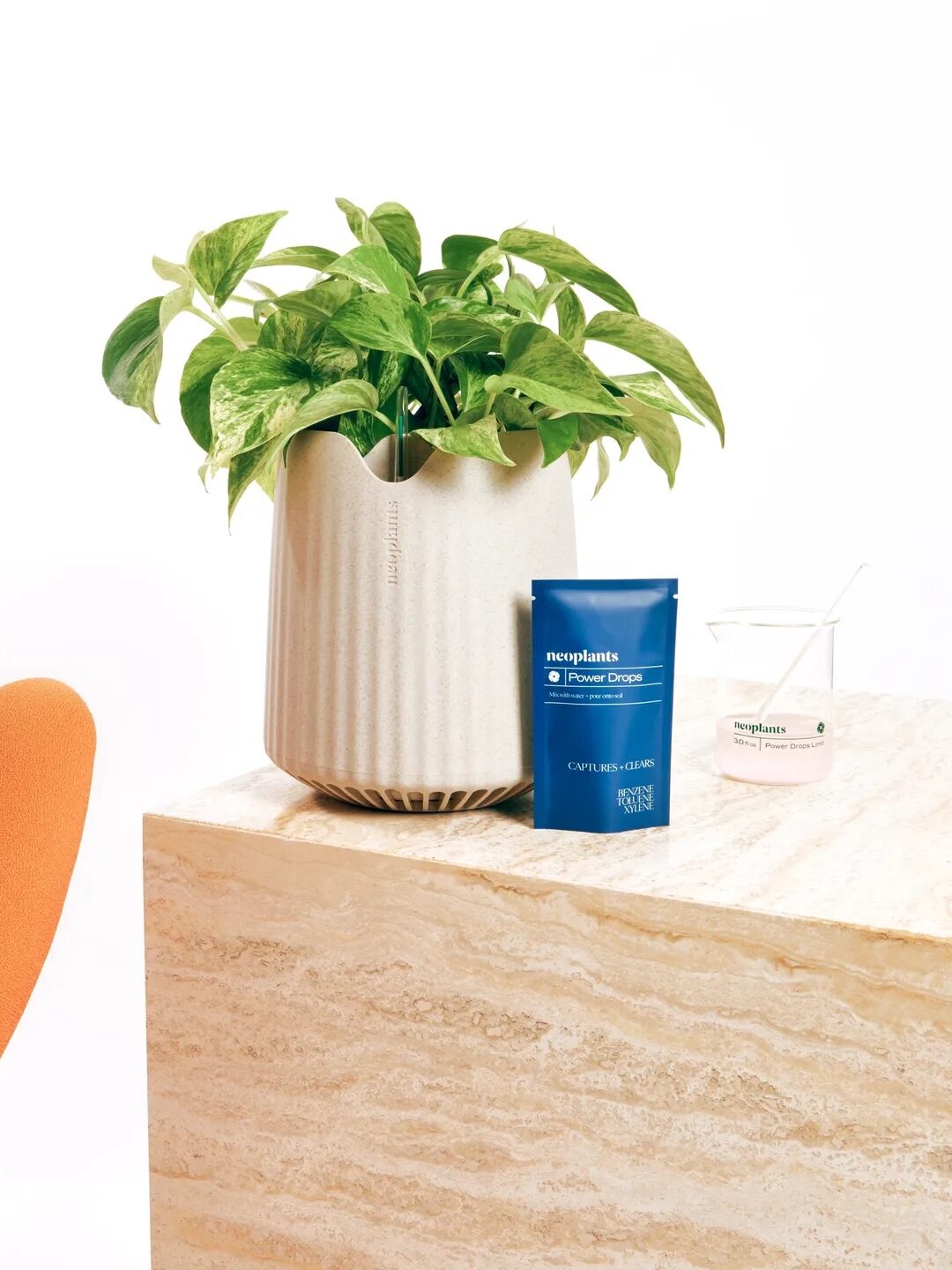
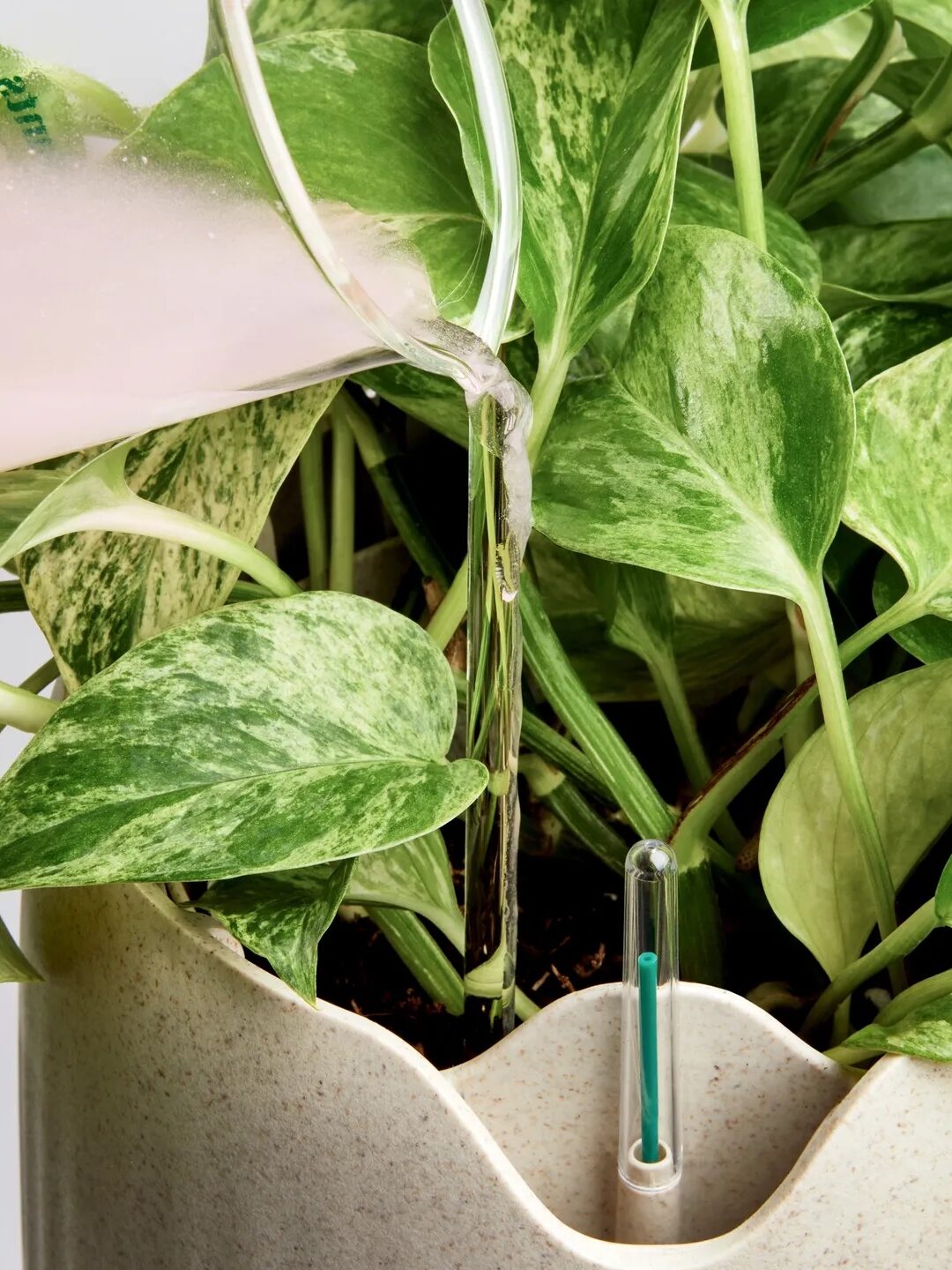
9. Enviroklenz
Filter Information | H13 HEPA filter, UV-C bulbs, Enviroklenz Air Cartridge, filters 3 to 5 times every hour, earth mineral technology, removes viruses, bacteria, chemicals, VOCs, mold, allergens & smoke
Purifies Up To | 1000 square feet
Price | Starting at $699
The EnviroKlenz Air System is a powerful air purifier that uses earth minerals and HEPA filtration to eliminate harmful toxins like chemicals, pathogens, allergens, and more from your home. It’s designed for maximum air purification with a patented mineral-based cartridge that captures and neutralizes pollutants. Alongside medical-grade HEPA filters, this system ensures clean, safe air for you and your family. It’s easy to use, eco-friendly, and effective, backed by third-party testing that proves its 99.9% efficiency in removing viruses, bacteria, mold, and VOCs.
Customer Review | “I spent 2 weeks researching the best air filtration device and came to the conclusion that I should give this one a try. It’s awesome. I have let friends and family borrow it and would recommend it to everyone. It is more expensive than others? Sure. But it’s so worth it if you are concerned about air quality.” – Lo (Read all reviews.)
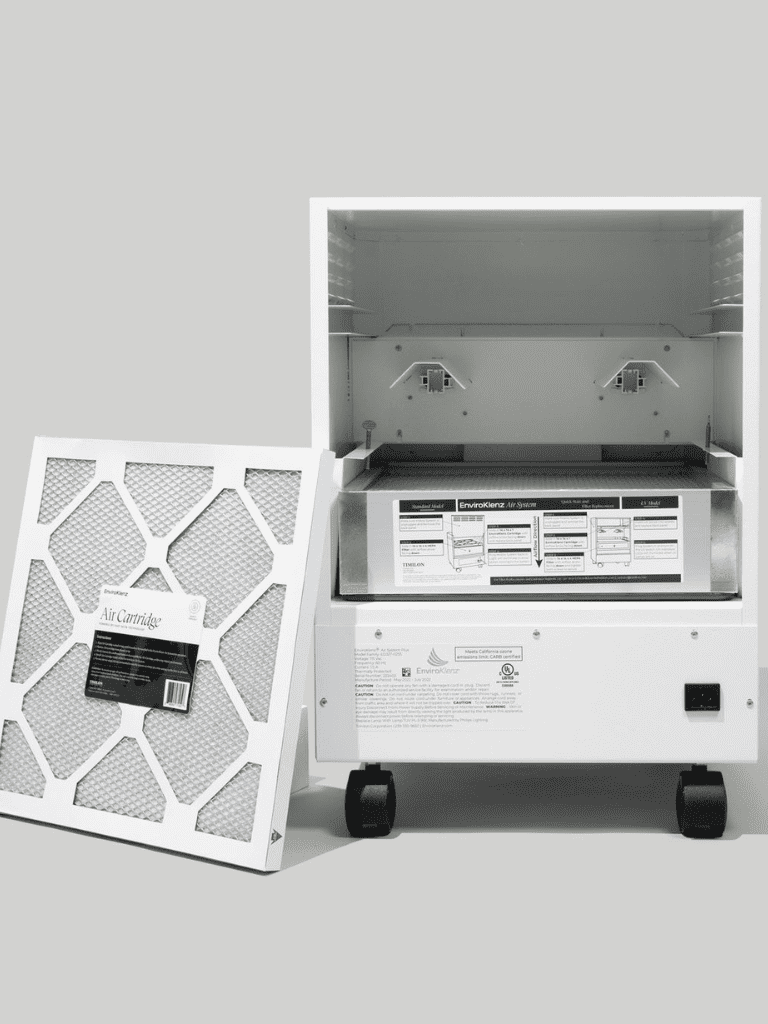

Featured image from Rabbit Air

